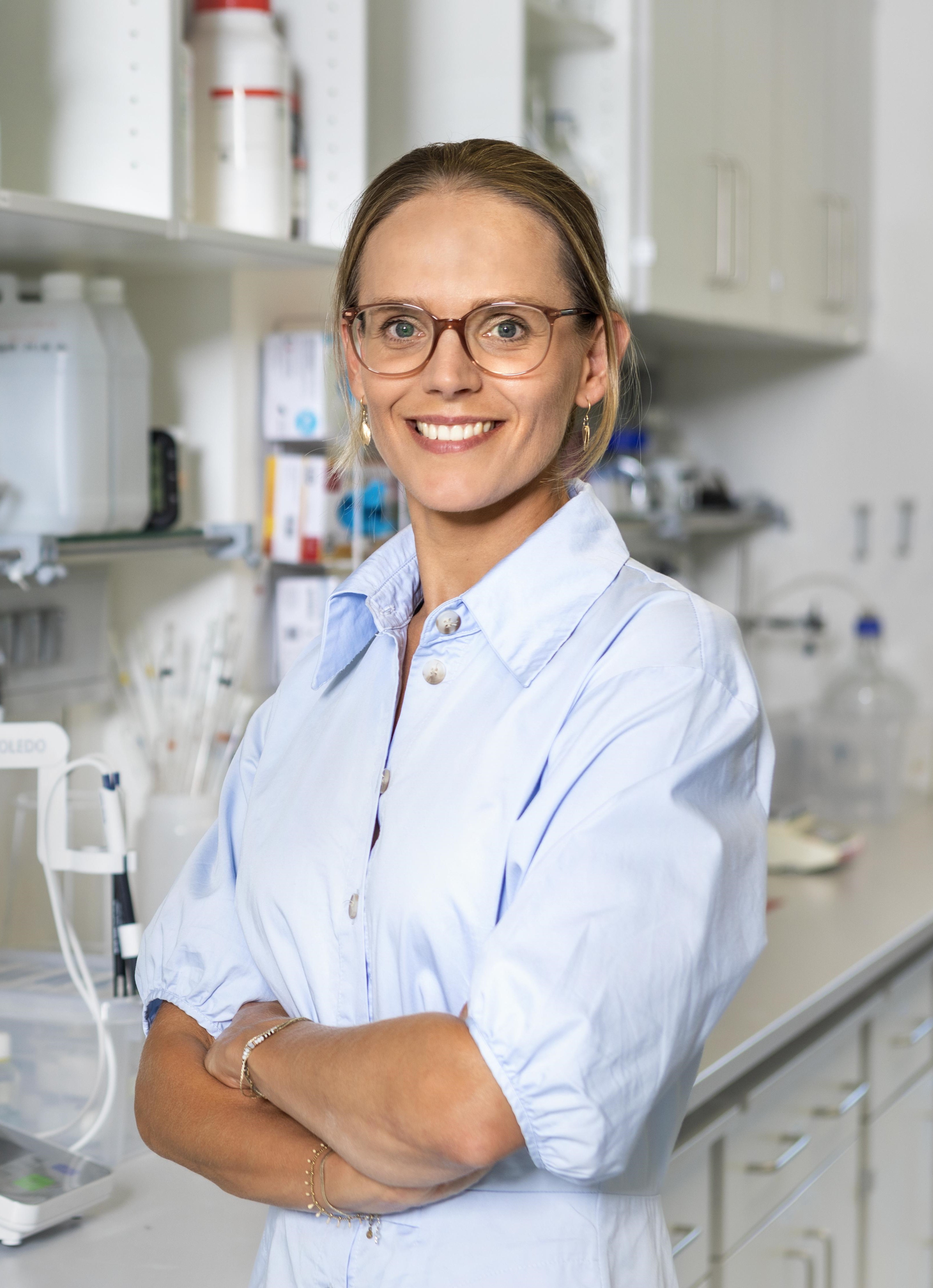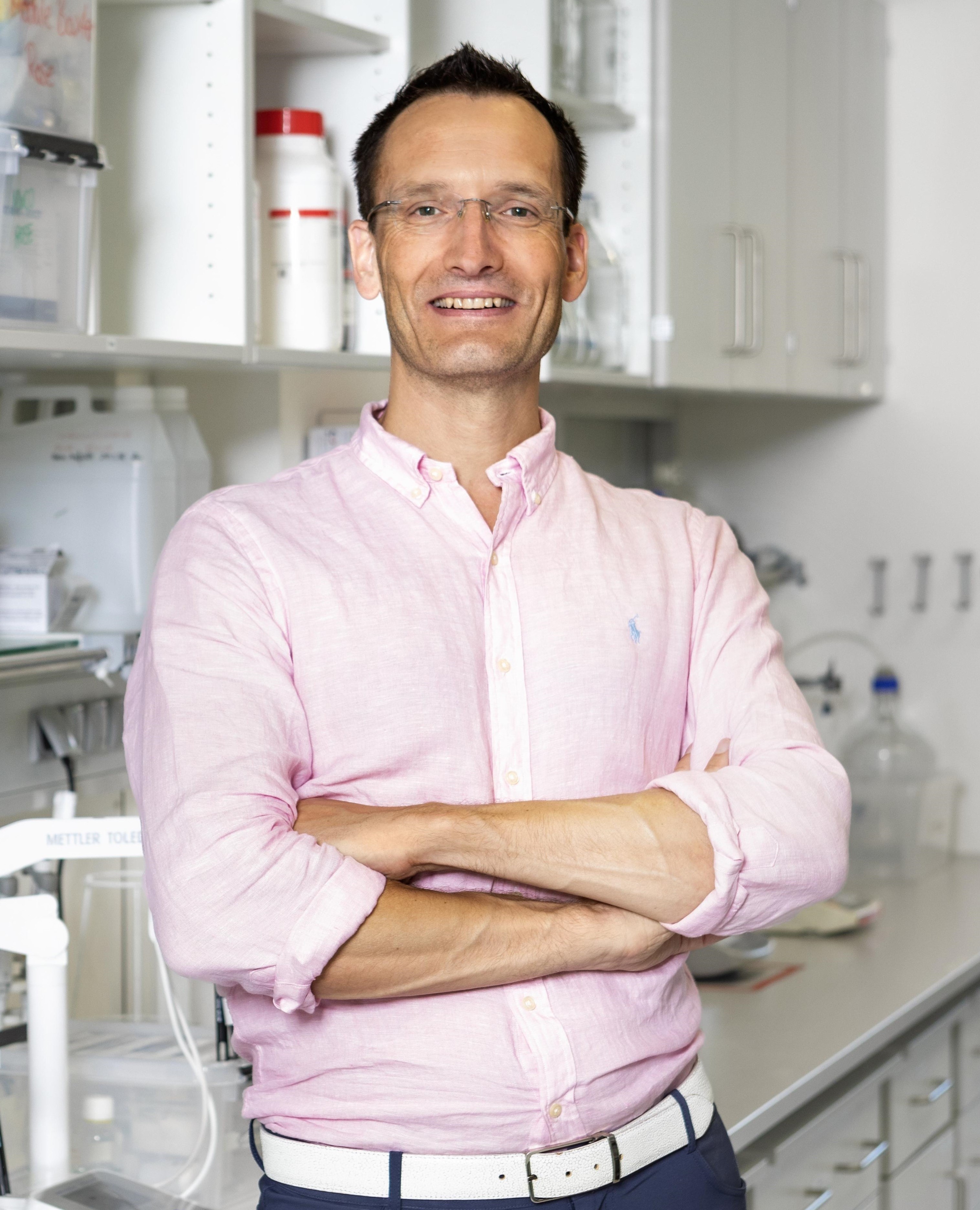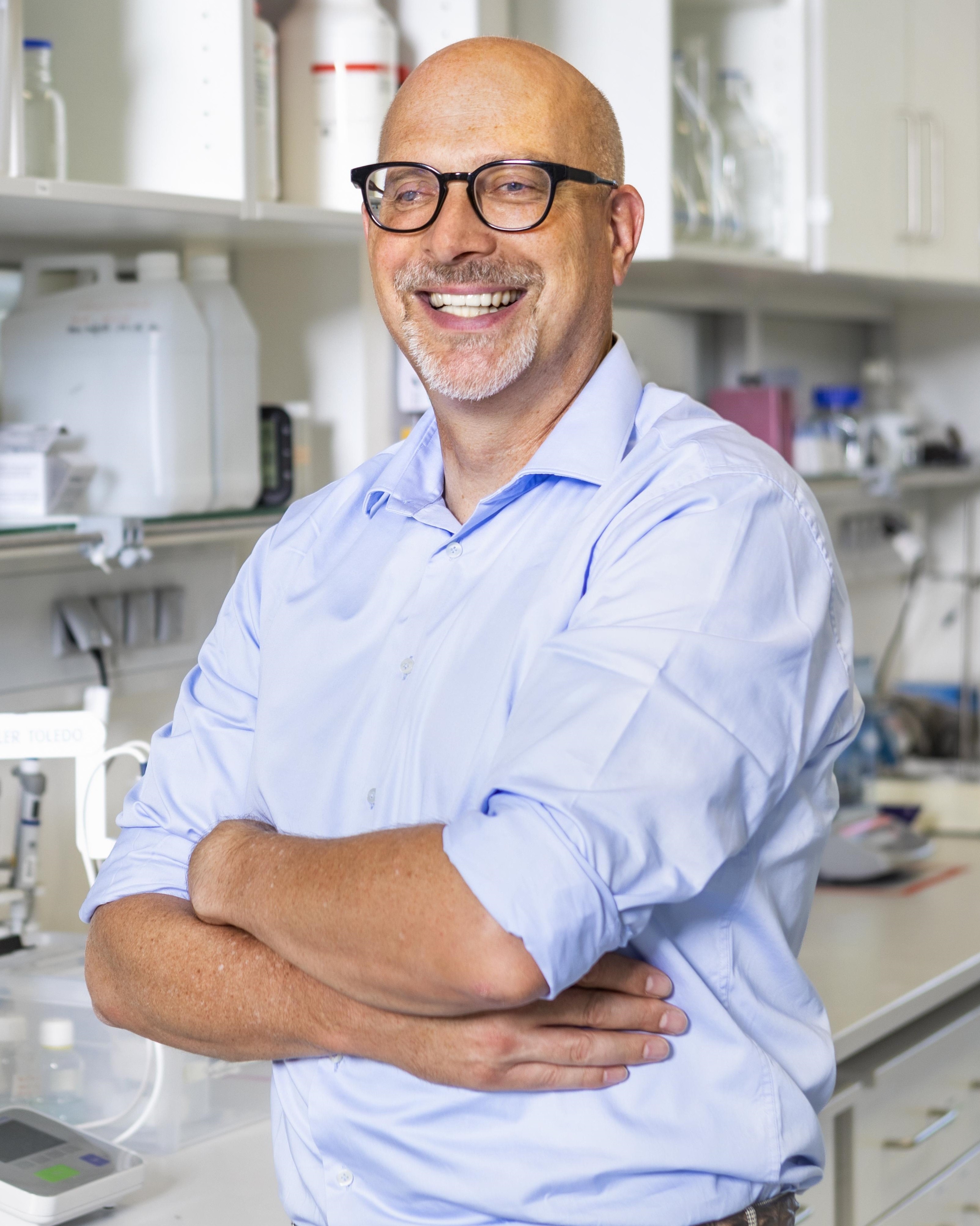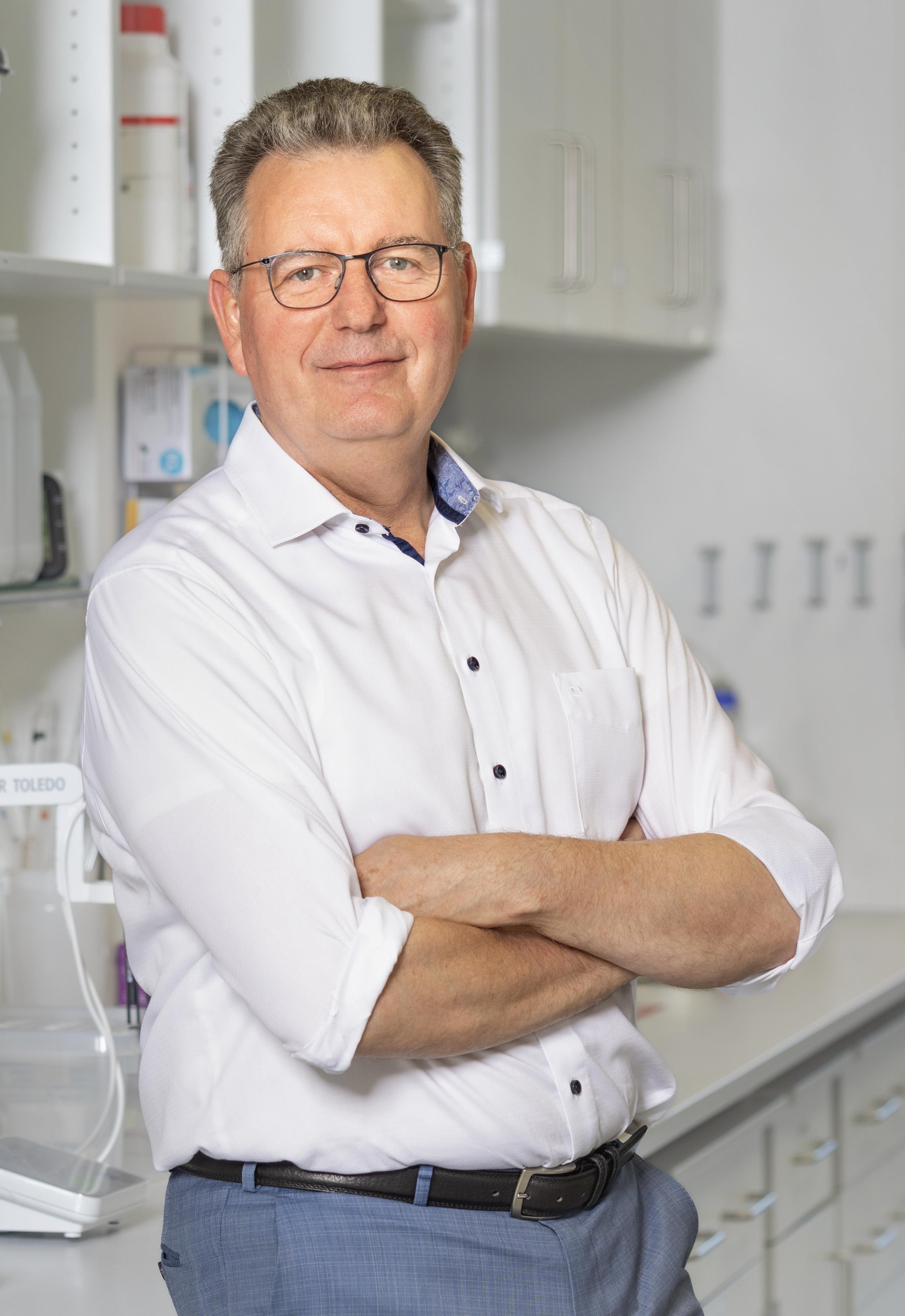In TriggerINK, the innovative principle of 4D printing is used, for which a special bio-ink will be designed. The following competences of research groups (RG) at the DWI are bundled for the project:
- Development of biomedical materials (Laura De Laporte)
- 3D printing by light (Stefan Hecht)
- Drug release by ultrasound (Andreas Herrmann)
- Printing of porous and micro-structured objects (Matthias Wessling)
Dr. Emilia Izak-Nau is responsible for the overall project coordination. TriggerINK is a prime example of how innovative science projects can be organised: They combine the knowledge of a wide range of disciplines.

RG De Laporte
Laura De Laporte and her team's expertise is in the field of biohybrid and bioinspired materials for advanced medical applications in tissue engineering. In various projects, they have already developed customised water-based hydrogels and microgels that can provide cells with an ideal support scaffold during their growth thanks to their controllable biochemical, mechanical and structural properties.
One overarching research question drives them in particular: How can we help the body regenerate tissue when it can't do it on its own? Here she is concerned, for example, with stimulating destroyed nerve pathways to directed, controlled growth. One way to help cells form these orderly tissue structures in the laboratory (in vitro) or in the body (in vivo) after an injury is the anisogel developed in her group. It is based on two gel components: First, these are microgel rods that contain magnetic nanoparticles and can thus be aligned according to a certain orientation with the help of a magnetic field. These small, ordered microgel rods are coated with a hydrogel, which supports the directed cell growth. The anisogel technology is also used in TriggerINK.

RG Hecht
The research focus of Stefan Hecht and his team is at the interface of chemistry and physics. The basis of their work is the design and production of molecules, which Stefan Hecht considers to be customised functional nano-building blocks and a central adjusting factor in the development of materials.
He is particularly fascinated by the idea of using light to control the properties of materials and a wide range of processes (from optoelectronics to biology). His most recent results and successes in the field of 3D printing in particular illustrate this approach: the process is based on the light-induced hardening of a transparent, highly viscous resin mixture. The hardening of the material only occurs at the points where the rays of light of two different wavelengths cross. The crossing light rays (X) thereby create the entire object (holos) in a print (graphy). This is how the name of the novel process came about: Xolography. His expertise in "chemistry with light" is of great importance to TriggerINK, as light becomes one of the key triggers of bio-ink.

RG Herrmann
Andreas Herrmann and his research group focus on synthetic chemistry and molecular biology. Together, chemists, biologists and physicists dedicate themselves to the task of inventing new molecular technologies and creating new biomolecular and biohybrid structures by bringing together chemical and biological processes.
His developments are used in various medical and technological fields - including novel drug release systems that react to external stimuli such as ultrasound. The active substances are enclosed in so-called carrier molecules. The ultrasound waves and the associated mechanical forces break the chemical bonds of these carrier molecules. The result: the active substances are "switched on" and unfold their effect. The method has so far been tested on conventional antibiotics and a cancer drug, among others. The release and activation of the respective active substances opens up completely new possibilities for controllable drug therapy, so that it is to be further extended to other classes of active substances and also in TriggerINK.

RG Wessling
Matthias Wessling and his research group work on the development and translation of membranes and membrane technologies to current global challenges in the fields of biochemical processes, hybrid processes and electrochemical membrane reactors. The spectrum of topics ranges, e.g., from flow-optimizatino of cultivation reactors of artificial organs to manufacturing methods of three-dimensional membranes and their application in gas separation and liquid filtration, to the development of electrochemical electrodes and processes.
In the context of TriggerINK, the group is exploring processes for synthesis and processing of bioinspired interactive material systems. The combination of light and laser based synthesis methods with biochemical materials allows to reduce mass transfer resistances by benefiting from complex geometries, and thus, optimize existing processes and explore new fields of application. The interplay between the structure-functional behavior and the external influences offers countless possibilities for innovation, which Matthias Wessling's group also exploits to develop functional processes that translate the scientific advances into application.
